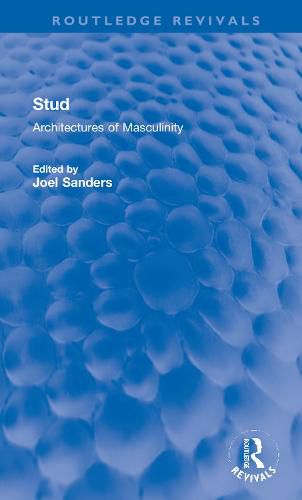Readings Newsletter
Become a Readings Member to make your shopping experience even easier.
Sign in or sign up for free!
You’re not far away from qualifying for FREE standard shipping within Australia
You’ve qualified for FREE standard shipping within Australia
The cart is loading…






Originally published in 1996, Stud: Architectures of Masculinity is an interdisciplinary exploration of the active role architecture plays in the construction of male identity. Architects, artists, and theorists investigate how sexuality is constituted through the organization of materials, objects, and human subjects in actual space. This collection of essays and visual projects critically analyzes the spaces that we habitually take for granted but that quietly participates in the manufacturing of maleness. Employing a variety of critical perspectives (feminism, queer theory, deconstruction, and psychoanalysis), Stud’s contributors reveal how masculinity, always an unstable construct, is coded in our environment. Stud also addresses the relationship between architecture and gay male sexuality, illustrating the resourceful ways that gay men have appropriated and reordered everyday public domains, from streets to sex clubs, in the formation of gay social space.
$9.00 standard shipping within Australia
FREE standard shipping within Australia for orders over $100.00
Express & International shipping calculated at checkout
Originally published in 1996, Stud: Architectures of Masculinity is an interdisciplinary exploration of the active role architecture plays in the construction of male identity. Architects, artists, and theorists investigate how sexuality is constituted through the organization of materials, objects, and human subjects in actual space. This collection of essays and visual projects critically analyzes the spaces that we habitually take for granted but that quietly participates in the manufacturing of maleness. Employing a variety of critical perspectives (feminism, queer theory, deconstruction, and psychoanalysis), Stud’s contributors reveal how masculinity, always an unstable construct, is coded in our environment. Stud also addresses the relationship between architecture and gay male sexuality, illustrating the resourceful ways that gay men have appropriated and reordered everyday public domains, from streets to sex clubs, in the formation of gay social space.